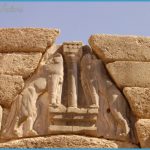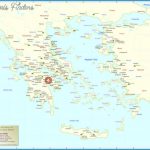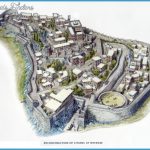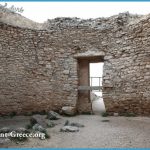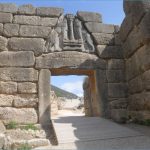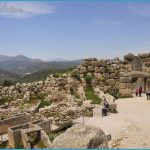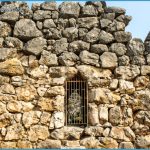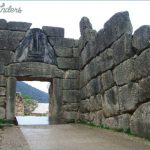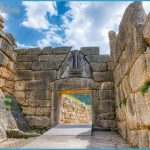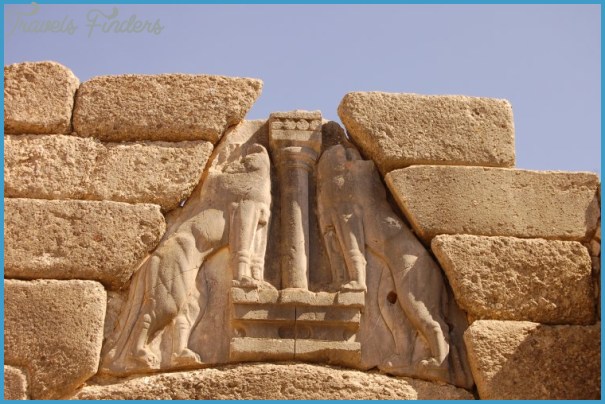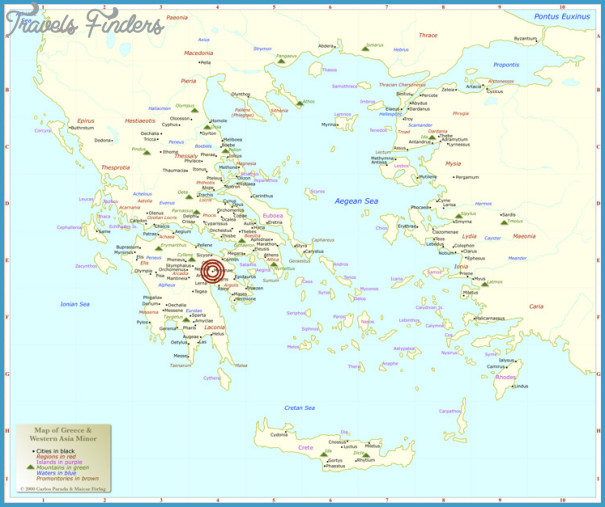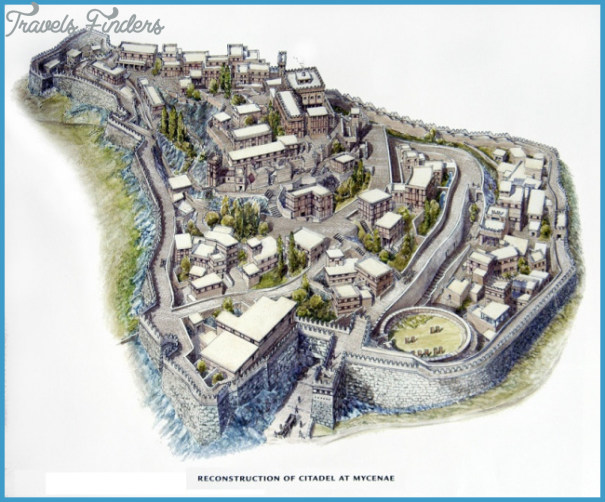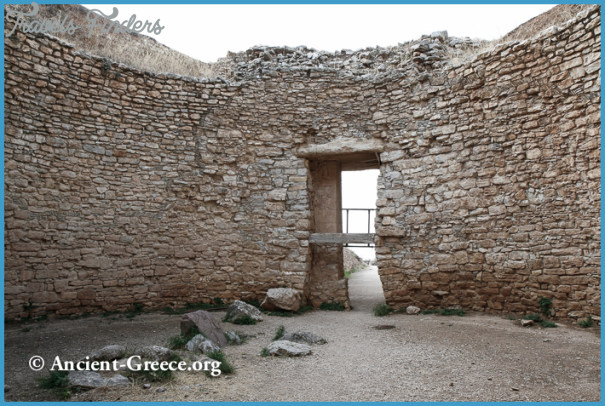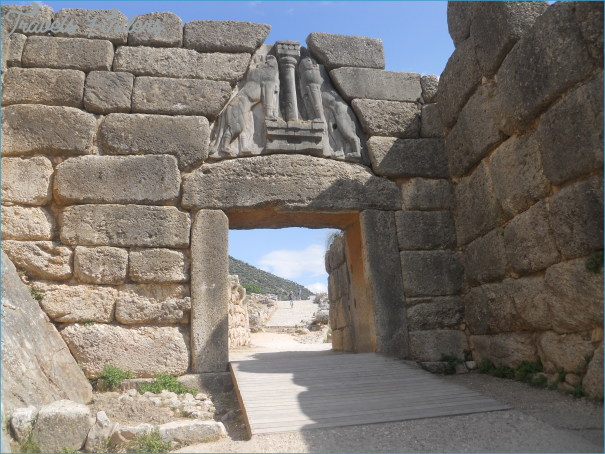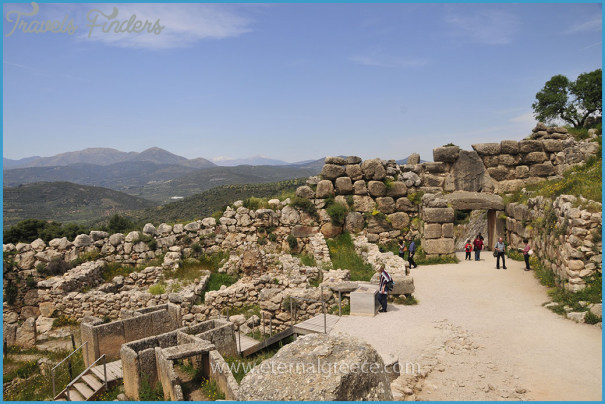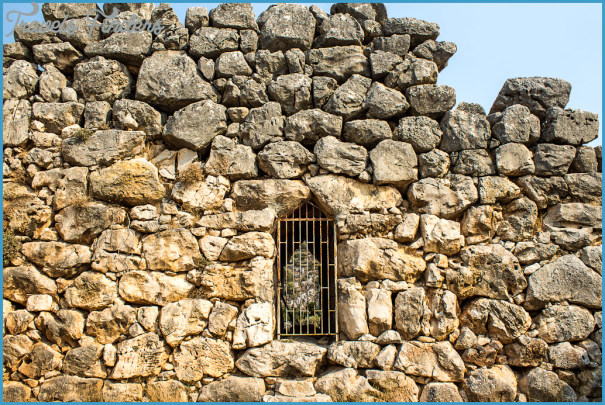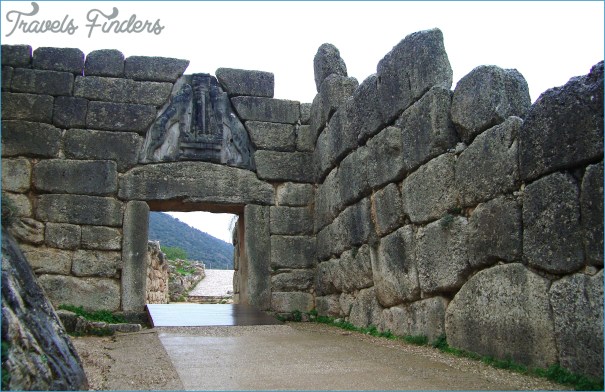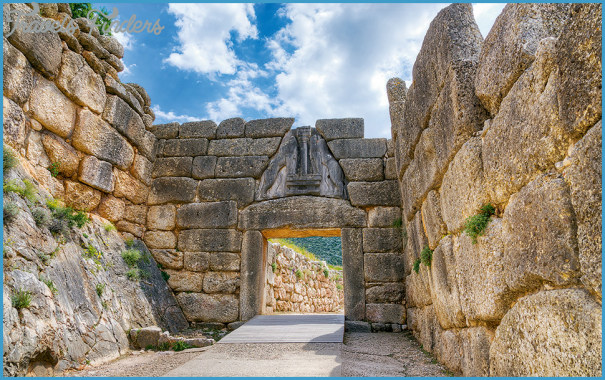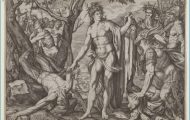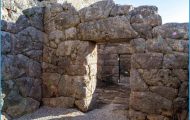It never leaves this house, the chorus, chanting its cabbala in unison, cacophonous, words so diabolic – and they’ve drunk human blood. And so their power is growing and they’re haunting all the house now with their ghostly tarantella and they cannot be dislodged – they’re in the blood, congenital, the demons of revenge. They are roosting in the palace, chanting psalms of blinding madness, of the passion that began it, a polyphony of loathing for a brother’s wife debauched, detestation for the man who so seduced her.. Look! Do you see them, roosting, huddled close beside the house, the young dream-phantoms, arms outstretched, the children killed – no! can it be?! – by their own family, clutching in their hands their flesh, their guts, their entrails, sweetmeats in a feast for their own father!
Mycenae & the Curse on Agamemnon’s Family Photo Gallery
Aeschylus, Agamemnon, II. 1186ff.
From the rise above the whitewashed chapel of the Panagia, the All-Holy Virgin, tranquil on a low ridge riddled with remains of royal tombs, Mycenae’s citadel appears to crouch, a brooding beast, between two glowering mountains. Around the low acropolis, its vertebrae of gleaming grey stones coil, clinging to the rock, whose steep cliff plunges to a chasm far below, known to the Greeks as Chaos. At times the gusting wind sweeps hard across the ruins, scouring the dry earth, and, just as suddenly, dies back – but not before a shroud of sand, an ochre cloud of dust, has lifted high into the air to drift and swell and finally subside, a spectral drizzle; and as it falls it coats once more the roofless halls, the winding lanes, the walls, the open graves.
And then the sun breaks through the scudding clouds. Quite unexpectedly the citadel is bathed in light. Yet still the feeling of foreboding lingers, a feeling rooted deeply in Mycenae’s past. For this was once not just a seat of glittering empire. Legends tell how Mycenae’s soil was soaked in blood as ruling families tore themselves apart, committing acts of ever-spiralling brutality.

